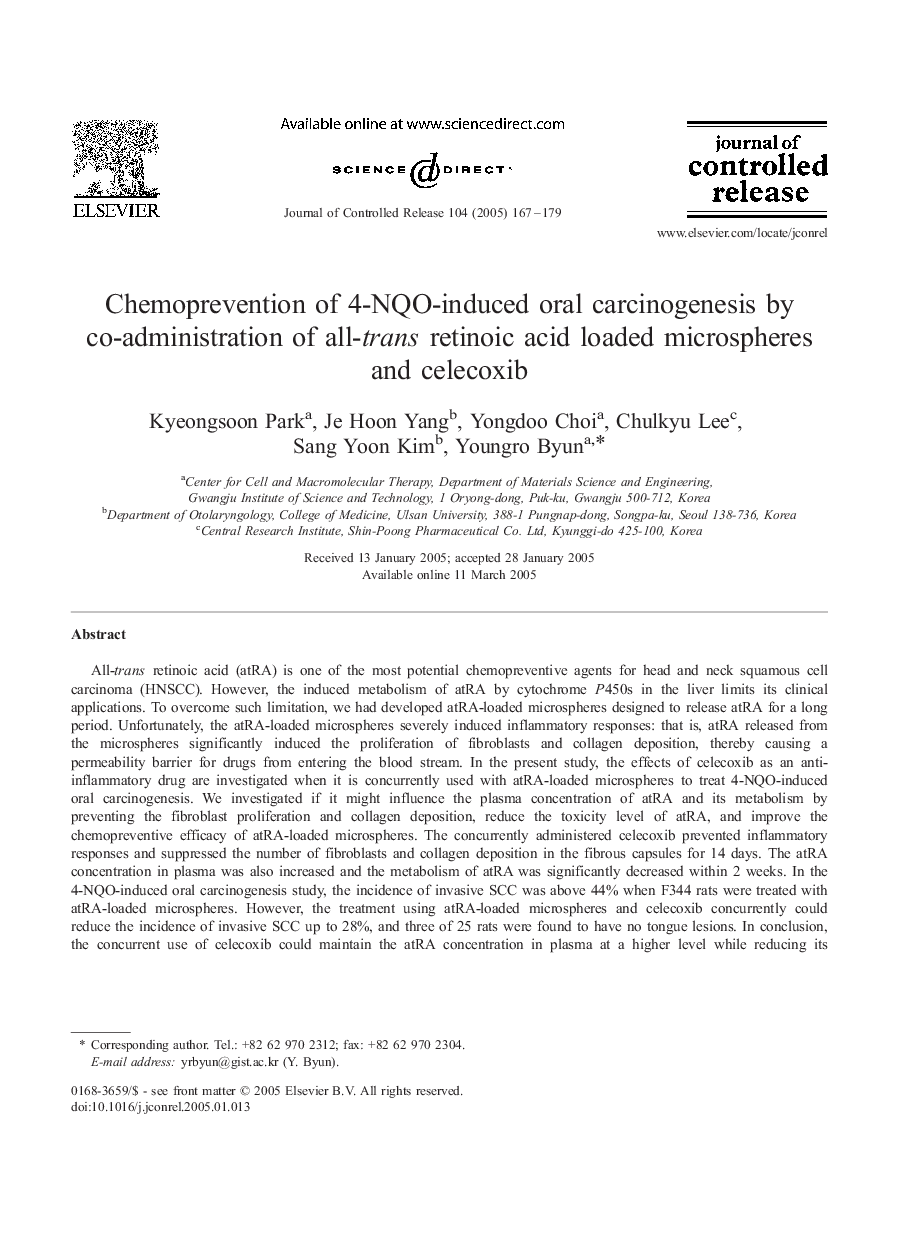| Article ID | Journal | Published Year | Pages | File Type |
|---|---|---|---|---|
| 10613595 | Journal of Controlled Release | 2005 | 13 Pages |
Abstract
All-trans retinoic acid (atRA) is one of the most potential chemopreventive agents for head and neck squamous cell carcinoma (HNSCC). However, the induced metabolism of atRA by cytochrome P450s in the liver limits its clinical applications. To overcome such limitation, we had developed atRA-loaded microspheres designed to release atRA for a long period. Unfortunately, the atRA-loaded microspheres severely induced inflammatory responses: that is, atRA released from the microspheres significantly induced the proliferation of fibroblasts and collagen deposition, thereby causing a permeability barrier for drugs from entering the blood stream. In the present study, the effects of celecoxib as an anti-inflammatory drug are investigated when it is concurrently used with atRA-loaded microspheres to treat 4-NQO-induced oral carcinogenesis. We investigated if it might influence the plasma concentration of atRA and its metabolism by preventing the fibroblast proliferation and collagen deposition, reduce the toxicity level of atRA, and improve the chemopreventive efficacy of atRA-loaded microspheres. The concurrently administered celecoxib prevented inflammatory responses and suppressed the number of fibroblasts and collagen deposition in the fibrous capsules for 14 days. The atRA concentration in plasma was also increased and the metabolism of atRA was significantly decreased within 2 weeks. In the 4-NQO-induced oral carcinogenesis study, the incidence of invasive SCC was above 44% when F344 rats were treated with atRA-loaded microspheres. However, the treatment using atRA-loaded microspheres and celecoxib concurrently could reduce the incidence of invasive SCC up to 28%, and three of 25 rats were found to have no tongue lesions. In conclusion, the concurrent use of celecoxib could maintain the atRA concentration in plasma at a higher level while reducing its metabolism by preventing inflammatory responses, thereby improving their chemopreventive effects against 4-NQO-induced oral carcinogenesis.
Related Topics
Physical Sciences and Engineering
Materials Science
Biomaterials
Authors
Kyeongsoon Park, Je Hoon Yang, Yongdoo Choi, Chulkyu Lee, Sang Yoon Kim, Youngro Byun,
